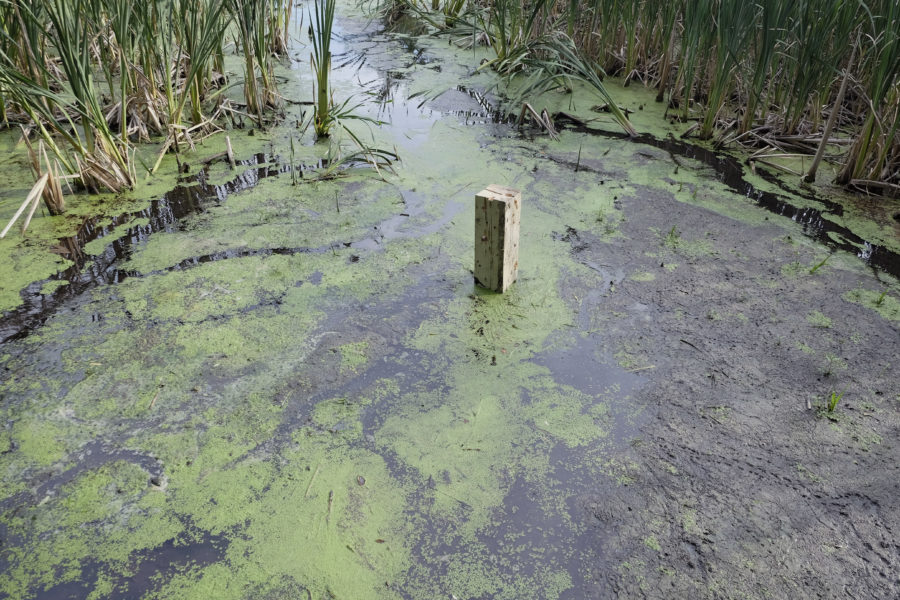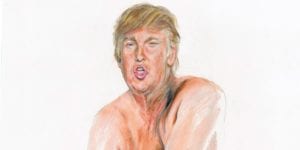This month for our #ArtPowerWomen series, we had the pleasure to chat with Mexican artist Paula Flores. Flores, who recently returned from her residency at Art Omi, focuses on components of nature and the depiction of their activity. She is fascinated with how interactions in nature take place. Flores utilizes a variety of materials from organic powders made from pulverized plants to non-organic materials such as found remains from constructions, metal, textile and paint; she attempts to create landscapes that represent the micro and macro components of nature.
We caught up with Flores to discuss her how her love and curiosity for nature developed, Art Omi, and how her background influences her process and work.
Art Zealous: Hometown
Paula Flores: Tijuana, México
AZ: Currently reading?
PF: I read multiple books at a time. Sometimes it takes a really long time to finish them, sometimes not. Right now I am reading How Forest Think by Eduardo Kohn, Anatomía de la destructividad human by Erich Fromm and Art in the Anthropocene Encounters Among Aesthetics, Politics, Environments and Epistemologies edited by Heather Davis and Etienne Turpin.
AZ: Drink of choice?
PF: So many. Coffee with cacao, green tea, aguas frescas, water that is alive from a river/aquifer directly from any natural source , tejate (prehispanic drink made from corn, cacao, seed of mamey, cacao flower) when I am in Oaxaca, Tejuino (fermented corn drink) for hot summer days and atole (hot corn-based drink, some other things are added for different flavors) for the winter.
AZ: You are fresh off Art Omi, talk to us about your experience there and why you chose that specific residency program.
PF: Art Omi was a beautiful experience. Starting with the wonderful people that surrounded me every day. We became a family full of energy, ideas and love. Living and making art with them every day is something that I will consider as one of the best experiences of my life. We had the best support team to help us achieve our goals during the residency and the place is amazing. Immersed in nature, Art Omi allowed me to interact on an everyday basis with our natural surroundings.

AZ: Your latest work focus on the status of nature and building a relationship with nature, have you always had a close connection to nature growing up?
PF: I had the connection thru my paternal grandparents. Both of them grew up in what was at the time small rural towns of Jalisco and also from my mother’s side. Some of the family still live on farms and have a cowboy life, so I guess it’s in the blood. My paternal grandparents were always connected to nature. Especially my grandfather who was a boy that knew how to survive in nature. He always needed to be connected with nature, so he always had a piece of land where he and all of us could be within nature. We still have this place that many of us in the family adore. It is my favorite place in the world. My morning ritual at our country home in Tecate is I get up and walk outside to the porch and sit there for a while. Feeling the morning energy of nature and the grandeur of the mountain that stands straight ahead.
AZ: You mentioned your grandparents were partly responsible for your deep connection with nature, what sort of stories did they tell you growing up that has stuck with you through adulthood?
PF: My grandfather José told me that he thought the world ended at the horizon he knew. He described his surroundings as an abundant and natural, where there was so much fruit on the trees that nobody could really go hungry. Since he was a young boy, he loved to go away from home to hunt. He would take a kilo of tortillas, a pouch with salt and his rifle, and spend three or four days by himself and survive from what he hunted.
My grandmother Teresa was a poet. She saw beauty and love in everything. Her stories from when she was a young child are embodied in magical surroundings of moonlight, birds, and fruit that she would pick of trees. She would tell me how she could spend all day high up in a tree eating fruit, hiding from her father to avoid doing house chores. The natural environment that surrounded her was always a major part of her stories, it was a part of her language. This made me imagine landscapes that I can’t explain with words, that are not part of my vocabulary, because they belonged in a time and place where casually interacting with nature was part of everyday life.

AZ: In one of your pieces, you use shiny gift wrapping and it really stood out to us, why did you choose this material?
PF: I use this material for different reasons. One, it talks to me about our attraction to shiny objects such as gold or silver and that for me is symbolic for what I consider is an obsession with existing perpetually in a permanent physical state thru objects and other media that allows it. Second, it is a material that has a distorted reflective surface. The person can see their reflection as part of the surrounding context.
AZ: We were blown away by your piece in the pond. You called the pond your “lab,” in fact, you left the work in the pond and documented it every day. Did it become a sort of ritual for you to wake up every day to check in on this piece and what you were going to discover? Was it cathartic in anyway?
PF: Actually, I did two works in the pond. The first one is a painting that I started in my studio. I took it to the pond, put it in the water and tied it to the small dock. I left it there for about two weeks and would go every day to see it, take pictures and sit there to see how the animals and insects interacted with it. A day before the open studio for Art Omi, I took it out and let it dry.
The second piece is the wood sculpture that I left in the pond. This was a shorter ritual then the painting. The painting was more of a slow understanding of the presence of life. Going every day to see how it was changing was the ritual, allowing time to go by.
The sculpture was more about action. Action that I was going to take making the sculpture and putting it in the pond, but not being there to see or document how interaction takes place. A big part of the sculpture was the physical labor of taking it to the pond and getting in there. A pond where the mud level is very high and difficult to walk in. You can’t grab on to anything, you just try to balance your body, when at the same time you are using strength to release every step that you took to be able to do the next step. I think the cathartic part of the pond is happening now, as an after effect of all my thoughts and actions taken there. All the knowledge that surrounded me every day and I was in the center, in my center, becoming a part of it.

AZ: Does your heritage or your past, drive you to create the work you do?
PF: It is part of it in the way that I think a lot in collective knowledge. I wonder how is it possible that we lost so much accumulated knowledge passed on from generation to generation in a blink of an eye. The past for me is looking at the connections that we had with nature because of a different lifestyle. How did it change and is there anything that can help us better understand our place in the present and how we interact?
AZ: Are humans bad for nature?
PF: Not at all. I think that we just separated ourselves enough to believe that we are not part of nature. We have acquired much knowledge thru the human existence and I believe we could put all this knowledge towards a positive relationship with nature instead of believing and acting as a superior species. We, as a human race, have acted in a positive manner to nature. There are still some groups of people that live this way. How can this love for nature be sparked with such strength that we shift towards an inclusive relationship?
AZ: We appreciate your awareness of imperfection, you embrace all parts of nature, not just the romantic or beautiful aspects. For example, you use leaves with holes or insects in them. Do you try apply this awareness to other areas of life?
PF: Yes, I believe this so-called imperfection allows us to understand that change is a constant. Transformation is imminent, and all this is what allows for more growth and life. Perfection doesn’t allow you to strive for anything else.

AZ: You recently had a solo show at Centro Cultural Tijuana, what are your thoughts on the future of the region’s contemporary art scene?
PF: My thoughts are that the support system for artists needs to grow and solidify. There are so many good artists in the region, but we are lacking spaces and supporters of the arts. Not that people don’t try to make this happen. There are alternative spaces that are usually artist-run and some of them have been operating for years and are very good, but the bigger scene is lacking. There is also institutional support, but I believe it should become a diverse network that allows and supports the growth of the Tijuana and Baja scene.
AZ: Could you share one piece of advice for aspiring, young artists?
PF: Always nourish freedom. Expose yourself to diverse people and experiences. Never do anything that you don’t want to, and do all that you want to for your art practice.
AZ: What’s next for you? What do you have coming up?
PF: I will be showing a section of my installation Flora Nativa en el Paisaje Invadido in a group show entitled, Being here with you/ Estando aquí contigo at the Museum of Contemporary Art of San Diego in September.
I also have a show coming up in Honolulu and a traveling group show titled Mexicaido in Japan.
Check out more of Paula’s artworks on Curatious.
#ArtPowerWomen series mission is to increase the visibility of important, unrepresented women artists. Art Zealous has teamed up in a pro bono collaboration with Curatious and GirlSeesArt. To be considered for the series, post your work with #artpowerwomen.
images // courtesy of the artist



